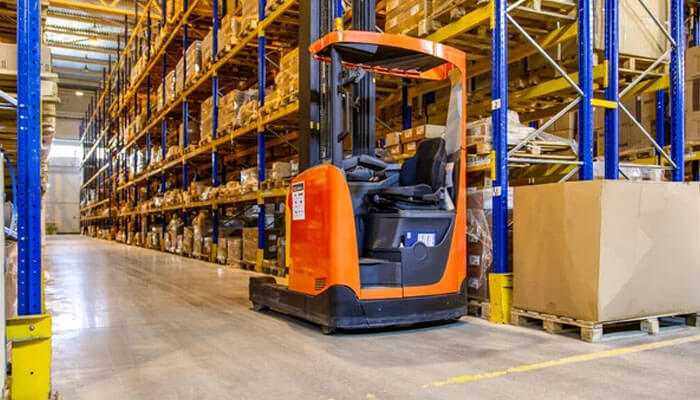In the fast-paced world of logistics, warehousing, and manufacturing, efficient material handling challenges aren’t just an operational necessity; it’s the backbone of productivity and profitability. However, businesses often encounter roadblocks that can stifle their flow, from space constraints and inventory mismanagement to safety hazards. Tackling these challenges head-on with innovative solutions can dramatically enhance operational efficiency and keep your business moving forward.
So, where do you start? The journey to overcoming these hurdles begins with identifying the root causes and implementing strategic measures that address them directly. It’s about turning challenges into opportunities for growth and efficiency. With the right approach, every obstacle becomes a stepping stone towards operational excellence.
Let this guide serve as your roadmap to navigating the complexities of material handling with ease and precision. The goal? To transform your operations into a model of efficiency and safety.
Implementing Smart Storage Solutions
Maximizing storage space while ensuring that inventory is accessible can feel like solving a complex puzzle. The key? Smart storage solutions. Vertical storage options, for example, utilize the often-underutilized vertical space in warehouses, freeing up floor space for more critical operations.
Automated storage and retrieval systems (AS/RS) take this concept further, streamlining the storage process and reducing the time it takes to retrieve items. By adopting such innovative storage solutions, businesses can make the most of their available space, reducing clutter and enhancing workflow efficiency.
But it’s not just about saving space; it’s about optimizing the flow of goods through your facility. Smart storage solutions can also significantly reduce the risk of damage to goods, ensuring that products remain in pristine condition until they reach the customer. Additionally, these systems can be integrated with your inventory management software, providing real-time updates on stock levels and locations.
This integration bridges the gap between physical storage and digital tracking, creating a seamless operational flow. As a result, businesses can respond more quickly to market demands, improving customer satisfaction and loyalty.
Enhancing Inventory Management Techniques
Have you ever considered the impact of inventory management on your business’s bottom line? Mismanaged inventory can lead to significant losses, whether through product obsolescence, shrinkage, or simply having capital tied up in stock that isn’t moving. Modern inventory management software, equipped with real-time tracking capabilities, offers a solution.
By integrating such software with Internet of Things (IoT) devices, businesses can achieve unparalleled accuracy in inventory management, ensuring that every item is accounted for and accessible when needed. But the benefits don’t stop there.
Enhanced inventory management techniques can also lead to better forecasting and demand planning, allowing businesses to adjust their stock levels more accurately and avoid both overstock and stockouts. This precision in inventory control can drastically reduce holding costs and improve cash flow. Moreover, with detailed data analytics, businesses can gain insights into inventory trends, helping them make informed decisions about product lines and promotions.
The ability to track inventory through every stage of the supply chain also enhances transparency and trust with customers, who increasingly value visibility into the origins and status of their purchases.
Optimizing Equipment Selection
Selecting the right equipment for your material handling needs is more than a matter of convenience; it’s a strategic decision that impacts safety, efficiency, and your bottom line. The market is full of specialized machinery designed to meet various needs, but this can lead to a bloated inventory of underutilized equipment.
Consider the versatility of solutions such as the fifth-wheel forklift attachment. This ingenious device transforms a standard forklift into a multi-purpose tool, allowing it to undertake tasks that might otherwise require separate, specialized equipment. It’s a prime example of how choosing adaptable equipment can streamline operations and reduce expenses. Beyond cost and efficiency, optimizing equipment selection can also significantly enhance worker satisfaction and ergonomics.
Workers equipped with the right tools are less prone to injury and more likely to exhibit higher productivity. Furthermore, investing in equipment that can be easily upgraded or adapted to future needs ensures your operations can evolve without requiring complete overhauls. Environmental considerations are increasingly important, too; selecting energy-efficient and low-emission equipment can help reduce your carbon footprint and meet sustainability goals.
In essence, the right equipment choices can align your operational capabilities with your broader business objectives, including financial performance, worker well-being, and environmental responsibility.
Fostering a Safety-First Culture
No discussion about material handling can overlook the paramount importance of safety. Workplace accidents not only cause injury but can also lead to significant downtime and financial losses. Cultivating a safety-first culture goes beyond mere compliance; it involves embedding safety into every aspect of your operations.
Regular training sessions, proactive equipment checks, and stringent safety protocols can collectively create an environment where safety is ingrained in the company ethos. Remember, a safe workplace is an efficient workplace. Additionally, a safety-first culture fosters a sense of belonging and care among employees, leading to increased engagement and retention. When workers feel valued and protected, their satisfaction and productivity soar.
Regularly updating safety protocols to reflect the latest industry standards and technologies ensures continuous improvement and adaptation to new challenges. Engaging employees in safety discussions and decision-making not only empowers them but also provides valuable on-the-ground insights for better safety measures. Ultimately, a strong safety culture is not just about preventing accidents; it’s about building a resilient, responsive, and responsible organization.
Leveraging Automation and Robotics
Facing challenges like labor shortages or the demand for high precision? Automation and robotics might just be your silver bullet. The advent of automated guided vehicles (AGVs), robotic arms, and other automated solutions has revolutionized material handling. These technologies not only mitigate the impact of labor shortages but also enhance accuracy, reduce waste, and streamline operations.
Embracing automation could be the leap forward your business needs to stay competitive in today’s market. The scalability of automation and robotics means that businesses of any size can find solutions tailored to their needs and budgets. As technology advances, these solutions become more accessible and adaptable, enabling even small and medium-sized enterprises to benefit from automation.
Training employees to work alongside these technologies can also enhance their skill sets, preparing them for the future of work. Moreover, automation can significantly improve workplace safety by taking over repetitive, strenuous, or hazardous tasks, reducing the risk of injury. The data collected by automated systems can provide invaluable insights into operational efficiency, helping businesses continuously optimize their processes.
Conclusion
Navigating the complexities of material handling requires a strategic approach, one that addresses the unique challenges of your operations while harnessing the potential of innovative solutions. By implementing smart storage solutions, enhancing inventory management, optimizing equipment selection, fostering a safety-first culture, and leveraging automation, you can overcome these challenges, boosting efficiency, safety, and productivity.
The path to operational excellence begins with addressing these foundational elements. Take a moment to evaluate your current material handling processes. Are there areas where efficiency could be improved? Could your safety protocols be stronger?
Perhaps it’s time to consider integrating some of the strategies discussed here. Remember, the goal is not just to overcome challenges but to excel in your operations. For tailored solutions that meet your specific needs, don’t hesitate to reach out to material handling professionals who can guide you toward achieving operational excellence.




